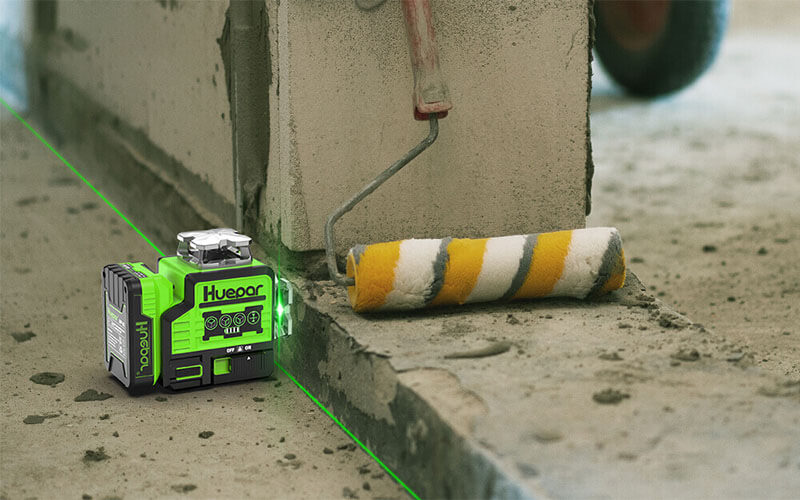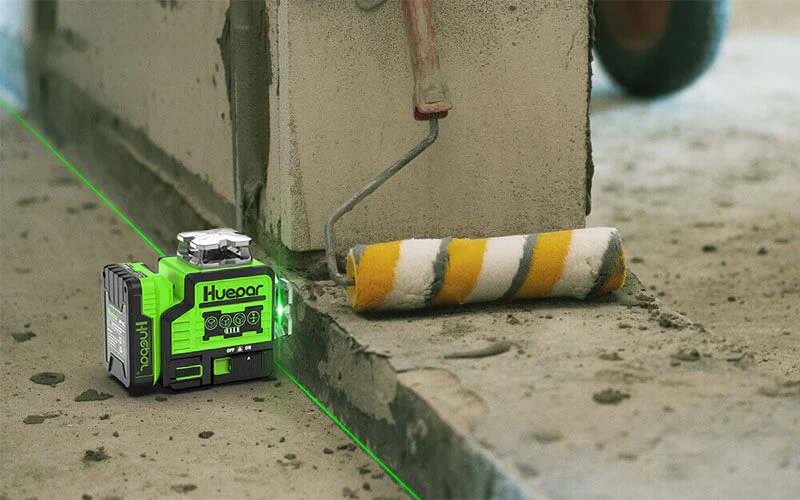
Share
Unlocking Precision in Construction: A Comprehensive Guide to 3D Laser Levels
March 12, 2024
Understanding Laser Levels and Their Significance
What Are Laser Levels?
Laser levels are tools that project a straight line onto a surface. They use a laser – a focused beam of light. This line acts as a guide for making things level or plumb. Builders, electricians, and DIY fans use them. They help in tasks like hanging pictures or laying tiles. As technology grows, laser levels have become more advanced. Now we have 3d laser levels for complex projects.
The Evolution of Laser Levels: From Traditional to 3D
Laser levels have come a long way since the first tools. Older models were simple and manual. They needed keen eyes and steady hands. Now, 3d laser levels are here. They offer more precision and ease. With 3D tech, they cast clear lines on all planes. This helps in complex layouts. Workers can now do jobs faster and with fewer errors. This shift has changed how builders work. The move from traditional to 3D is a leap in construction tech.
Importance of Precision in Construction
In construction, precision is key to success. It ensures structures are safe and built to last. Mistakes can lead to costly repairs or even hazards. Laser levels help avoid such issues. These tools project accurate lines or dots onto surfaces. This lets builders align and place materials with precision. Even small errors can cause big problems over time. Precise measurements can also speed up the work process. They reduce the need for redoing work. Using laser levels boosts both quality and efficiency on the job site.
Types of Laser Levels Explained
Cross Line Laser Level: Basics and Uses
- Cross Line Laser Level: At the core, a cross line laser level projects two visible lines. One is horizontal and the other is vertical, intersecting to form a cross on a target surface. This tool is often used for alignment and leveling tasks within smaller indoor spaces, like hanging pictures, installing cabinetry, or setting tiles. Its ease of use makes it a popular choice among both DIY enthusiasts and professional builders. Its simplicity is also its strength; with just a push of a button, users can mark accurate guidelines without the need for tedious measurements. Ideal for quick reference, it’s a must-have for precision tasks that require both hands free.
3D Laser Levels: Features and Advantages
3d laser levels are a game-changer in the tool world. Unlike simple line lasers, they project a three-dimensional grid. This grid lets users map out a space in all directions. 3D levels emit horizontal and vertical lines. So, they create a complete room layout with one setup. They are great for complex tasks that need absolute exactness. Key features include self-leveling and indoor/outdoor modes. Some have a 360-degree rotation and remote control access for ease. Their accuracy saves time and avoids costly mistakes. In short, 3D laser levels offer advanced precision, which makes them vital for top-notch results.
Comparing 4D Laser Levels with 3D laser Levels
When looking at laser levels, we often hear about 3D and 4D models. Both are advanced tools for precision. Yet, they have key differences. 3d laser levels project lines along the X, Y, and Z axes. This creates a 360-degree layout on all planes. They are great for tasks needing horizontal and vertical reference. On the other hand, 4D laser levels add an extra line. This line can be a second vertical or horizontal line. It gives extra reference points for complex jobs. It’s like having an extra hand on site. For detailed work, a 4D laser level may be better. But for most tasks, a 3D level will do the job well. The choice depends on the nature of the project and its precision needs.
Practical Applications and How to Choose
Implementing 3D Laser Levels in Construction Projects
3d laser levels are changing how we build. They make measurements fast and accurate. When used in construction, they help in many tasks. This includes setting out floor plans and installing walls. They can also help with plumbing and electrical work. You can use them to align cabinets and drop ceilings too. 3D laser levels are useful in both indoor and outdoor projects. They increase work speed and reduce errors. This leads to savings in time and money. Choosing the right 3D laser level is key. Look for features that match the job you have. Make sure to also follow safety rules when using them.
Factors to Consider When Choosing a Laser Level
- Type and Range: Decide whether you need a 3D, cross line, or 4D laser level.
- Consider the laser level’s range that fits the project’s scale.
- Accuracy: Look for levels with high precision.
- Check the manufacturer’s accuracy specs.
- Durability: Choose a laser level built to last.
- One that can withstand a construction site’s demands.
- Battery Life: Consider how long the level can operate.
- Long battery life is key for uninterrupted work.
- Ease of Use: Pick a level that’s simple to set up and operate.
- Ensure it comes with user-friendly controls.
- Mounting Options: Think about how you will secure the level.
- Check for versatile mounting options.
- Price: Balance cost with features and quality.
- Don’t compromise essential features for a lower price.
- Warranty and Support: Look for good customer service.
- Choose brands that offer solid warranties and help.
Maintenance and Safety Tips for Laser Levels
To ensure laser levels operate safely and last longer, good care is essential. Here are key tips:
- Regular Inspection: Check the laser level before each use. Look for damage or alignment issues.
- Clean Lenses Carefully: Use a soft, dry cloth. Remove dust and debris to keep the laser line clear.
- Proper Storage: Store the device in its case. Avoid places with extreme temperatures or moisture.
- Battery Management: Charge or replace batteries as needed. This avoids power loss mid-task.
- Handle with Care: Avoid drops and impacts. These can affect the laser level’s accuracy.
- Read the Manual: Know your laser level’s features. Follow the maker’s instructions for use and care.
- Safety Gear: Wear safety glasses when using a laser level. This protects your eyes from the laser beam.
By following these tips, you can help extend the life of your laser level and keep it functioning accurately for precision work.

